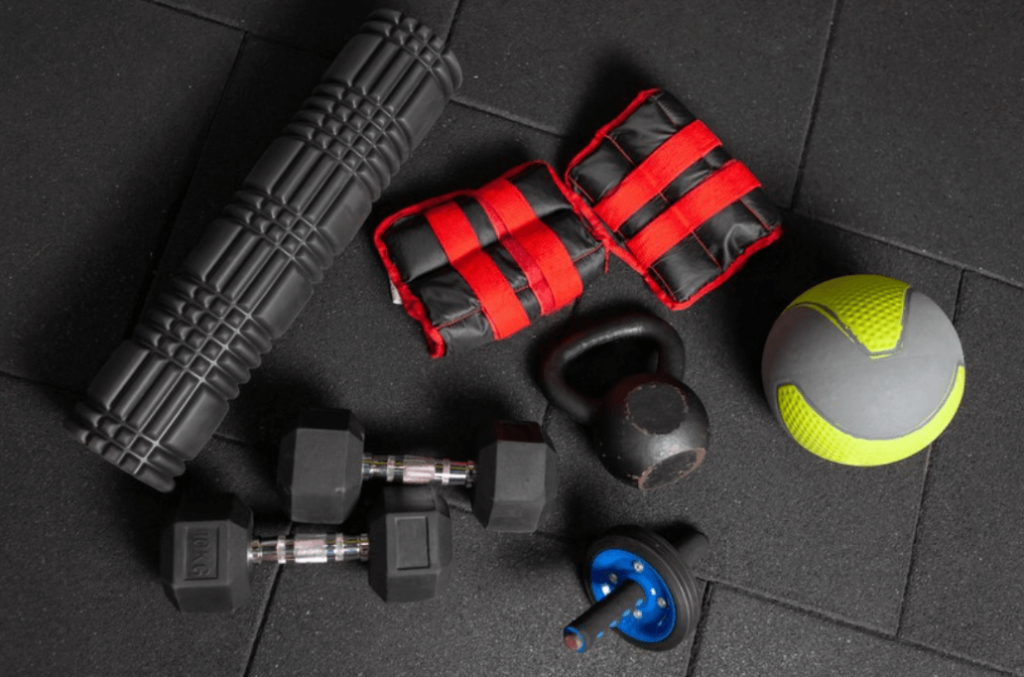Consistent physical activity plays a pivotal role in sustaining a well-balanced and healthy lifestyle. However, the potential for injuries can pose challenges to our fitness endeavours, regardless of whether we are experienced fitness enthusiasts or beginners. It becomes imperative to prioritise injury prevention and equip ourselves with the knowledge to effectively handle injuries should they occur. In this blog post, we will delve into practical strategies aimed at averting workout injuries and understanding how to navigate through them, thereby promoting a secure and enduring fitness routine.

Understanding the Common Workout Injuries
Initiating our discussion on workout injuries, it’s crucial to spotlight some prevalent types, including sprains, strains, and overuse injuries. These injuries can occur irrespective of one’s fitness level and are often a consequence of intense physical activity. Recognizing the early indicators of such injuries holds paramount importance as it enables individuals to promptly address the issue.
Identifying the initial signs of sprains, which involve the stretching or tearing of ligaments, strains, characterised by damage to muscles or tendons, and overuse injuries, resulting from repetitive stress on a particular body part, empowers individuals to take timely action. Early detection facilitates a more effective response, preventing the exacerbation of injuries and potentially reducing the recovery period. By understanding and acknowledging these warning signs, individuals can proactively manage their fitness routines, fostering a safer and more sustainable approach to exercise.

Pre-workout Precautions
Emphasise the significance of a proper warm-up routine before engaging in any exercise. Provide examples of dynamic stretches and light cardio activities to prepare the body for more intense physical activity and Proper Form and Technique Stress the importance of maintaining correct form during exercises to reduce the risk of injuries. Include tips and visual guides for various workout routines.

Building Balance and Workout Routine
Incorporating a well-rounded fitness program is crucial for overall health and fitness. Strength training enhances muscle mass, metabolism, and bone density. Cardiovascular exercise improves heart health and endurance. Flexibility work enhances range of motion and reduces the risk of injury. Rest days are essential for recovery, allowing muscles to repair and preventing burnout.
Cross-training, or incorporating diverse activities, is pivotal in preventing overuse injuries. It distributes stress across different muscle groups and joints, reducing the strain on specific areas. This approach helps maintain a balanced physique, mitigates the risk of repetitive stress injuries, and enhances overall fitness. A comprehensive fitness regimen that includes strength, cardio, flexibility, and rest ensures holistic well-being and long-term sustainability.

Listening to your Body
Listening to your body and recognizing these nuances is pivotal. Pushing through pain can lead to overtraining, which can result in injuries and setbacks. Modify workouts when needed, whether by adjusting intensity, duration, or type of exercise. Embrace the concept of rest days; they are not a sign of weakness but a crucial element in preventing overtraining.
Understanding your body’s limits and respecting them fosters a sustainable and injury-free fitness journey. By heeding the signs of fatigue and pain, you empower yourself to make informed decisions that contribute to long-term health and fitness. Remember, it’s not just about the intensity of your workouts but also about the wisdom to rest and recover when necessary.

Equipment and Safety Measures
This guide emphasises the importance of selecting suitable gear for a fitness journey, covering footwear, clothing, and equipment. It stresses the significance of tailored choices for different activities.
Additionally, the guide highlights the crucial role of safety equipment like lifting belts, knee braces, and wrist wraps in preventing injuries during workouts. The emphasis is on informed decision-making to enhance both performance and safety throughout the fitness journey.

Post-workout Recovery
Explore effective post-workout recovery strategies, including proper cool-down exercises, stretching, and the importance of adequate sleep. Discuss the role of nutrition in recovery and muscle repair.

Managing Injuries
Provide guidance on what to do if an injury occurs, emphasising the R.I.C.E. (Rest, Ice, Compression, Elevation) method for minor injuries. Encourage readers to seek professional medical advice for more severe injuries. A healthcare professional can assess the extent of the injury and provide appropriate treatment. Remember, early intervention can contribute significantly to a faster and more effective recovery.

Conclusion
In conclusion, Injury prevention is fundamental for a sustainable and enjoyable fitness journey. By staying informed about common injuries, implementing proper warm-up and cool-down routines, maintaining correct form, adopting balanced training practices, prioritising rest and recovery, and listening to their bodies, individuals can significantly reduce the risk of workout injuries. This proactive approach not only safeguards physical well-being but also ensures that fitness goals are achieved safely and with long-term sustainability.


